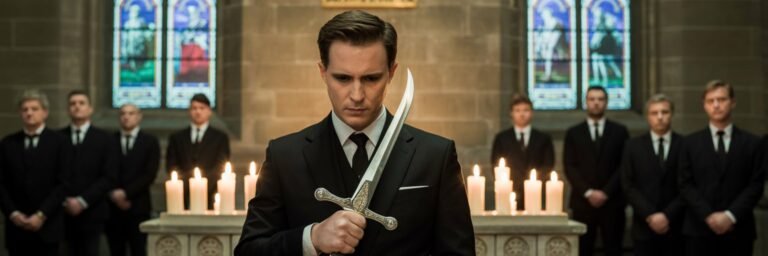INTRODUCTION
At the crossroads of history, where societal norms are transformed and epochs defined, lie some of the most poignant speeches and influential quotes known to humanity. These declarations–born from the crescendos of cultural shift–have shaped the trajectory of nations, instigated movements, and touched the spiritual marrow of societies. From the ancient Roman Senate to the streets of Selma, from the Bastille to Brandenburg Gate, the chronicling of these powerful articulations provides a roadmap of human evolution, arresting in the permanence of ink those universes of sentiment that otherwise would be carried away on the breezes of time.
HISTORICAL BACKGROUND
In 43 BC, a grieving Marcus Antonius ignited the flames of civil war in Rome with a heart-wrenching eulogy for Julius Caesar. As Shakespeare dramatized it, “Friends, Romans, countrymen, lend me your ears…” Transcending millennia, the speech resonates as a masterful oratory that whipped a nation into collective action, epitomizing the transformative power of well-placed words.
Fast forward to 1940, and we stand amid the smoky ruins of a near-defeated Britain as Winston Churchill galvanizes a nation with his “We shall fight on the beaches” speech. These words were echoed in the ears of men, women, and children huddled in shelters during the onslaught of Luftwaffe, embedding a steely resolve in a beleaguered population.
THEORIES AND INTERPRETATIONS
Historical discourse varies when interpreting the true significance of these speeches and quotes. Some scholars argue that these orations merely embody the zeitgeist and owe their stature to perfect timing. For example, Franklin D. Roosevelt’s “The only thing we have to fear is fear itself” is seen by some as capturing the desperate mood of a people reeling from the Great Depression.
Conversely, other historians propose an ‘Orator Effect’, a theory suggesting that these speeches possess an agency of their own, capable of reshaping societal and political landscapes. They refer to cases like the aforementioned Churchill speech, which arguably shaped Britain’s resolve during WWII, turning the tide of imminent defeat. Regardless of the lens, the potency of these historical declarations is undeniable.
MYSTERIES AND CONTROVERSIES
There’s no discourse on iconic speeches devoid of controversy. A lingering debate centers on the ‘I Have a Dream’ speech by Martin Luther King Jr. Was it a premeditated oration or an impromptu address–a query that arose from the reported divergence from his drafted speech during the 1963 March on Washington. Some argue that his spontaneous detour was a stroke of genius, vitalizing an audience of 250,000 and lending the Civil Rights Movement a whole new impetus.
SYMBOLISM AND CULTURAL SIGNIFICANCE
Exploring the cultural significance of these speeches, we find them drenched in symbolism and meta-narratives. Take The Gettysburg Address, for instance—Abraham Lincoln’s 273-word eulogy is perceived as a rebirth of the American Dream, hailed as the symbolic end of an old order and the dawn of a new era.
Similarly, Jawaharlal Nehru’s “Tryst with Destiny” speech not only heralded India’s independence but is seen as an embodiment of countless anti-colonial struggles, marking a post-colonial era globally. These speeches symbolize cultural shifts, etching themselves into the collective consciousness of societies.
MODERN INVESTIGATIONS
Modern explorative methods continue to unspool new dimensions from these seminal quotes and speeches. Linguistic analysis of The Gettysburg Address unveiled Lincoln’s genius in crafting his message in a way that connected deeply with the populace, encapsulating their shared pain, hope, and commitment to democracy. Prosody, for example, plays a significant role in the resonance of a speech or quote. Martin Luther King Jr.’s rhythmic cadence, akin to that of Southern Baptist preachers, contributed to the profound impact of his words.
Additionally, historians employ sociological, psychological, and political models to delve deeper into these speeches, identifying sub-textual narratives and the influence of environmental factors on these public addresses.
LEGACY AND CONCLUSION
The indelible signatures of these speeches continue to mold societies in exceeding measure. The “I Have a Dream” speech birthed many movements the world over, its words echoing in far reaches from Tiananmen Square to Tahrir Square. Churchill’s defiant resilience during WWII is still a template for world leaders amidst crises.
Additionally, the format and style of memorable speeches have found a permanent place in oratorical pedagogy. The power of these speeches enthused a generation of leaders who have continued to employ the principles of these grand orations.
Throughout history, monumental speeches and quotes have stirred collective consciousness, emblemizing cultural shifts that defined eras and reshaped humanity’s core. Their legacy remains in their resonance, much like a timeless melody, soothing and inspiring through the ages. They provide critical insights into human evolution, substantiating the significant role of communication in societal progress. Most of all, they validate our shared history, a testament to the resilience and indomitable spirit of mankind—even inscribed on the tablets of time, the echoes of these speeches continue to reverberate through the canyons of human history.
As we navigate the centuries, these speeches serve as a history compass, leading us into the unfathomable depths of our past, our triumphs, and ignominious defeats, reminding us of the power of a well-placed word and the profundity of human will. We live through the remnants of their influence, stand on the shoulders of their triumphs, and learn from the wisdom they captured—a glance backward providing a roadmap into an unfathomable future, that ‘tide in the affairs of men, which taken at the flood, leads on to fortune’ as succinctly captured by the indomitable Bard.






